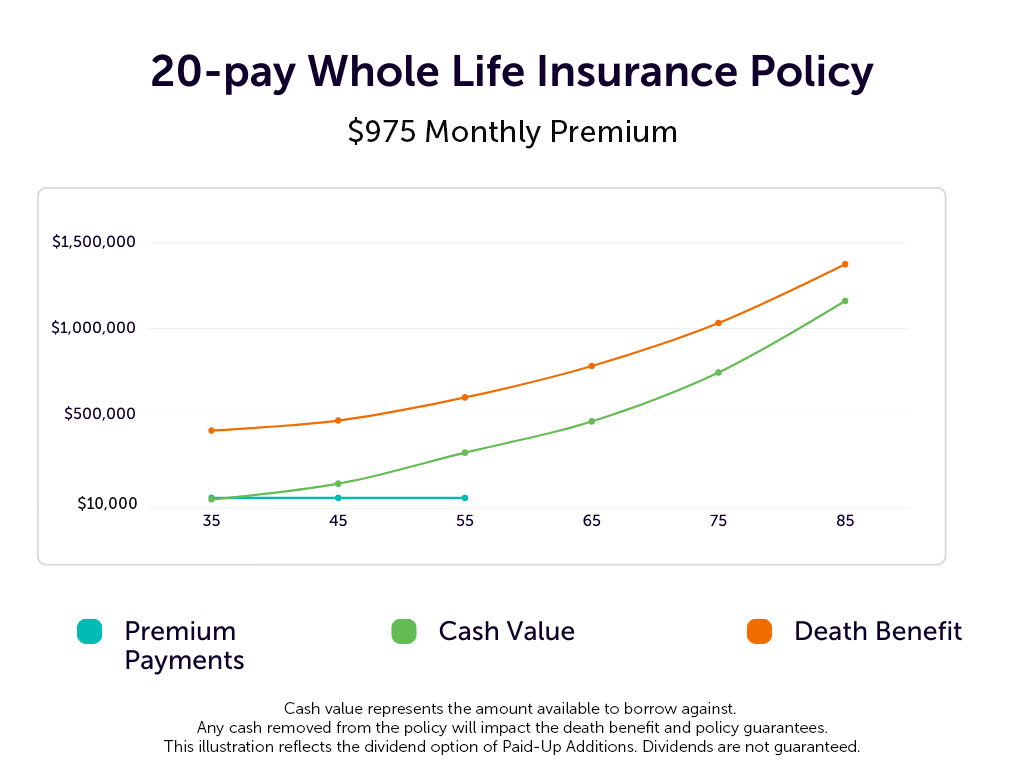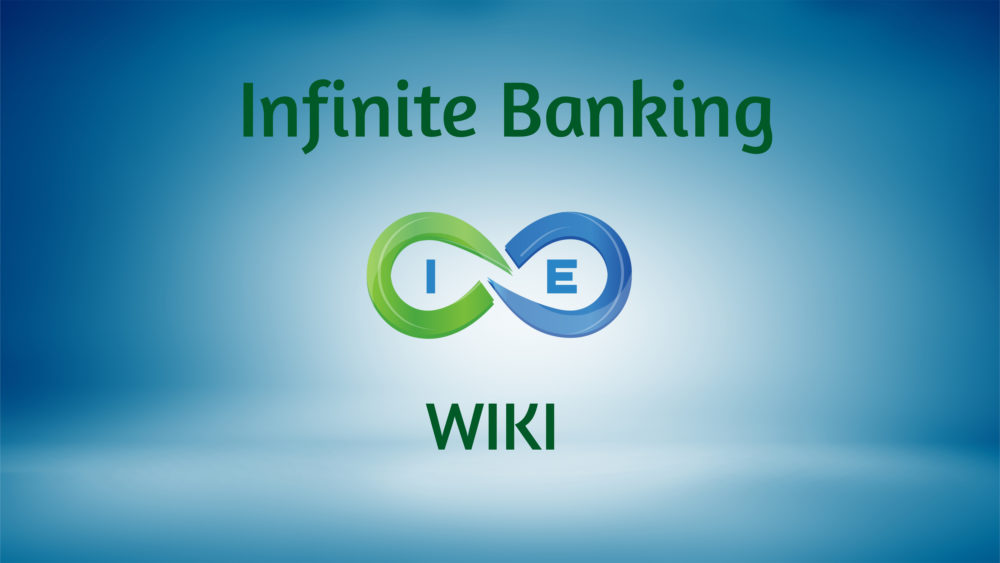All Categories
Featured
Table of Contents
Okay, to be reasonable you're truly "financial with an insurance company" rather than "financial on yourself", but that principle is not as simple to offer. It's a little bit like the concept of acquiring a residence with cash money, after that obtaining versus the home and placing the cash to function in an additional financial investment.
Some individuals like to talk concerning the "velocity of cash", which essentially indicates the same point. That does not mean there is nothing worthwhile to this principle once you obtain past the advertising.
The entire life insurance policy market is plagued by extremely expensive insurance policy, massive payments, unethical sales methods, reduced prices of return, and badly enlightened clients and salesmen. If you desire to "Bank on Yourself", you're going to have to wade into this market and in fact purchase entire life insurance. There is no replacement.
The guarantees inherent in this item are vital to its function. You can obtain against many kinds of money worth life insurance, however you should not "bank" with them. As you buy a whole life insurance coverage plan to "financial institution" with, keep in mind that this is a totally different section of your monetary plan from the life insurance policy section.
Get a large fat term life insurance plan to do that. As you will certainly see below, your "Infinite Banking" policy actually is not mosting likely to reliably offer this essential financial function. An additional trouble with the reality that IB/BOY/LEAP depends, at its core, on a whole life plan is that it can make acquiring a policy bothersome for much of those interested in doing so.
Is Infinite Banking A Scam
Dangerous hobbies such as SCUBA diving, rock climbing, skydiving, or flying likewise do not mix well with life insurance policy products. The IB/BOY/LEAP advocates (salesmen?) have a workaround for youbuy the plan on someone else! That might exercise great, considering that the factor of the plan is not the survivor benefit, but bear in mind that acquiring a policy on minor youngsters is a lot more costly than it ought to be since they are normally underwritten at a "standard" price instead than a preferred one.

A lot of policies are structured to do one of two points. The payment on a whole life insurance plan is 50-110% of the very first year's costs. Sometimes plans are structured to optimize the death benefit for the premiums paid.
With an IB/BOY/LEAP policy, your objective is not to take full advantage of the fatality benefit per dollar in costs paid. Your objective is to maximize the cash money value per buck in costs paid. The rate of return on the plan is extremely essential. One of the finest ways to optimize that aspect is to obtain as much cash as possible right into the policy.
The finest method to improve the rate of return of a plan is to have a relatively tiny "base plan", and then placed even more cash money right into it with "paid-up enhancements". Rather than asking "Exactly how little can I place in to get a particular survivor benefit?" the concern becomes "Just how much can I legitimately took into the policy?" With even more cash money in the plan, there is even more cash worth left after the prices of the survivor benefit are paid.
A fringe benefit of a paid-up enhancement over a regular costs is that the compensation rate is lower (like 3-4% rather than 50-110%) on paid-up additions than the base plan. The less you pay in compensation, the greater your price of return. The price of return on your cash money worth is still mosting likely to be adverse for a while, like all money worth insurance plan.
Many insurance policy companies just provide "direct acknowledgment" financings. With a direct acknowledgment funding, if you borrow out $50K, the dividend rate used to the cash money value each year just uses to the $150K left in the plan.
The Banking Concept
With a non-direct acknowledgment car loan, the firm still pays the very same dividend, whether you have "obtained the cash out" (technically against) the plan or otherwise. Crazy? Why would they do that? Who knows? However they do. Frequently this feature is paired with some much less valuable facet of the plan, such as a reduced reward price than you might obtain from a policy with direct recognition loans (how do you become your own bank).
The firms do not have a resource of magic free cash, so what they give up one place in the plan should be taken from one more location. If it is taken from a function you care much less about and place into a function you care a lot more around, that is an excellent thing for you.
There is another crucial feature, typically called "wash finances". While it is fantastic to still have actually returns paid on money you have actually gotten of the plan, you still need to pay passion on that particular finance. If the dividend rate is 4% and the car loan is billing 8%, you're not exactly coming out in advance.
With a laundry lending, your car loan rate of interest is the same as the returns price on the policy. While you are paying 5% interest on the finance, that rate of interest is totally countered by the 5% returns on the loan. In that respect, it acts just like you took out the money from a financial institution account.

5%-5% = 0%-0%. Same same. Therefore, you are currently "financial on yourself." Without all three of these variables, this policy simply is not going to function extremely well for IB/BOY/LEAP. The greatest problem with IB/BOY/LEAP is the individuals pushing it. Virtually all of them stand to profit from you getting right into this principle.
There are numerous insurance policy representatives chatting about IB/BOY/LEAP as an attribute of whole life who are not really offering plans with the essential functions to do it! The problem is that those that understand the idea best have a large problem of rate of interest and normally inflate the advantages of the principle (and the underlying policy).
Td Bank Visa Infinite Rewards
You must contrast borrowing against your plan to taking out cash from your interest-bearing account. Go back to the beginning. When you have absolutely nothing. No cash in the bank. No money in financial investments. No cash in cash money value life insurance policy. You are faced with an option. You can place the cash in the financial institution, you can invest it, or you can purchase an IB/BOY/LEAP plan.
It grows as the account pays passion. You pay tax obligations on the rate of interest yearly. When it comes time to buy the boat, you withdraw the money and get the watercraft. You can conserve some even more cash and placed it back in the financial account to begin to earn interest again.
It grows throughout the years with capital gains, returns, rental fees, and so on. Some of that income is tired as you accompany. When it comes time to buy the watercraft, you offer the financial investment and pay taxes on your lengthy term funding gains. You can conserve some more cash and get some more investments.
The cash money worth not used to spend for insurance and compensations grows for many years at the reward price without tax drag. It starts with negative returns, but hopefully by year 5 or so has recovered cost and is expanding at the reward price. When you go to buy the watercraft, you obtain versus the plan tax-free.
Infinite Banking Insurance
As you pay it back, the money you paid back begins growing once more at the returns rate. Those all work pretty in a similar way and you can contrast the after-tax rates of return. The 4th choice, however, functions really in different ways. You do not conserve any type of cash nor acquire any type of sort of financial investment for years.
They run your debt and offer you a funding. You pay passion on the obtained money to the bank up until the financing is paid off.
Latest Posts
How To Invest In Life Insurance Like Banks
R Nelson Nash Infinite Banking Concept
Infinite Insurance And Financial Services